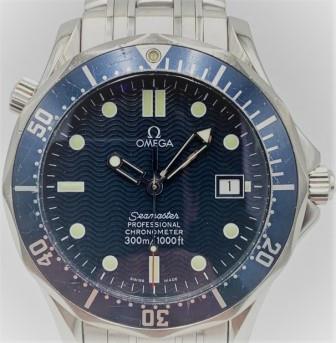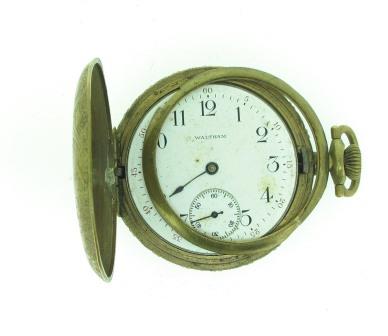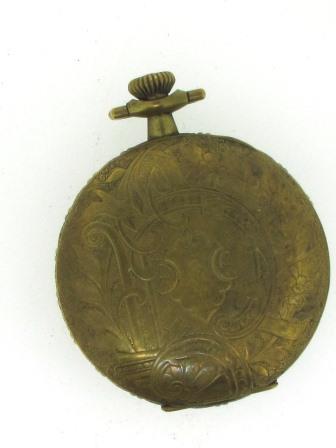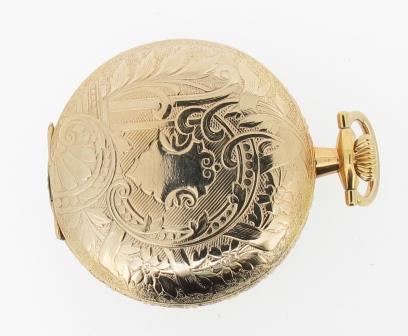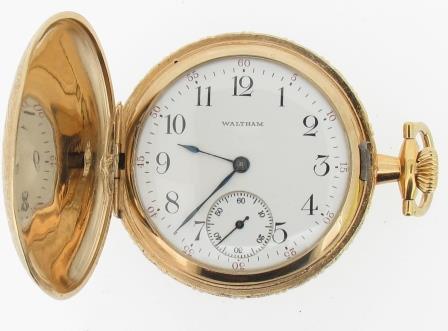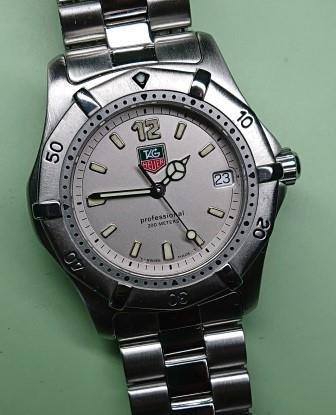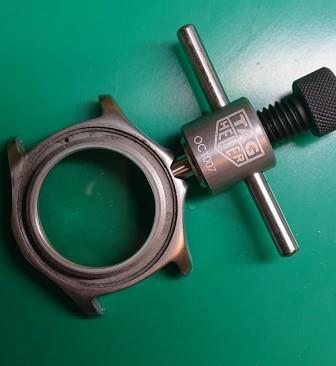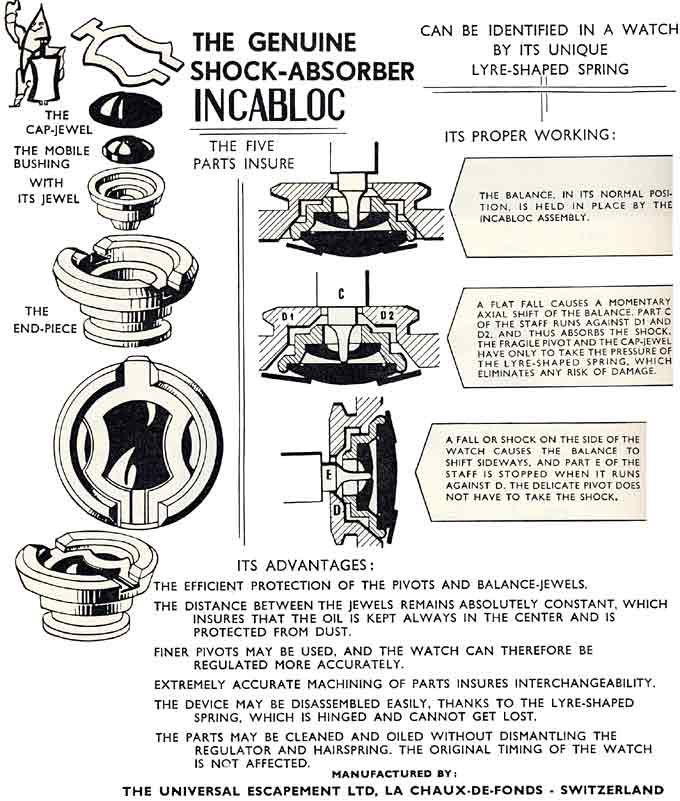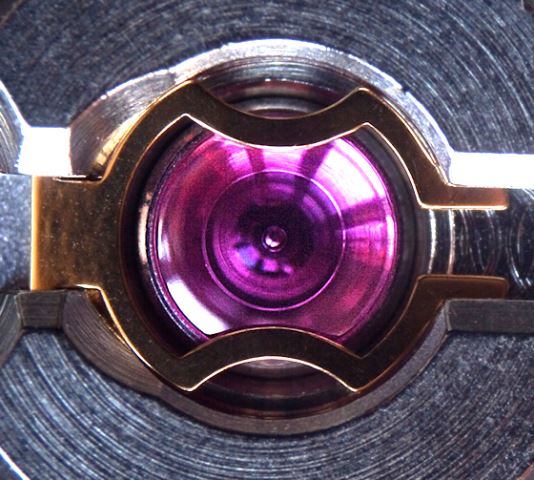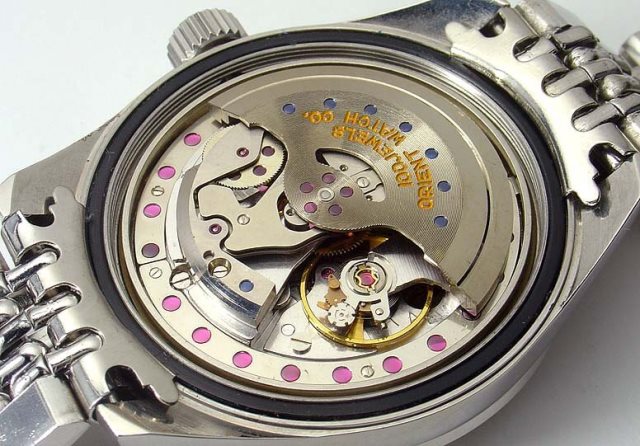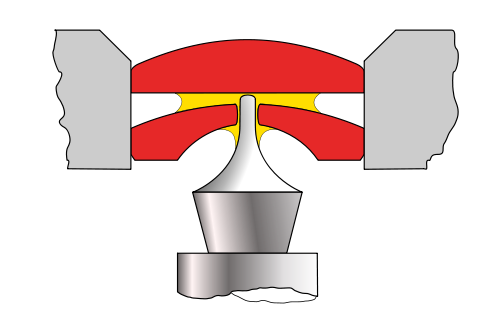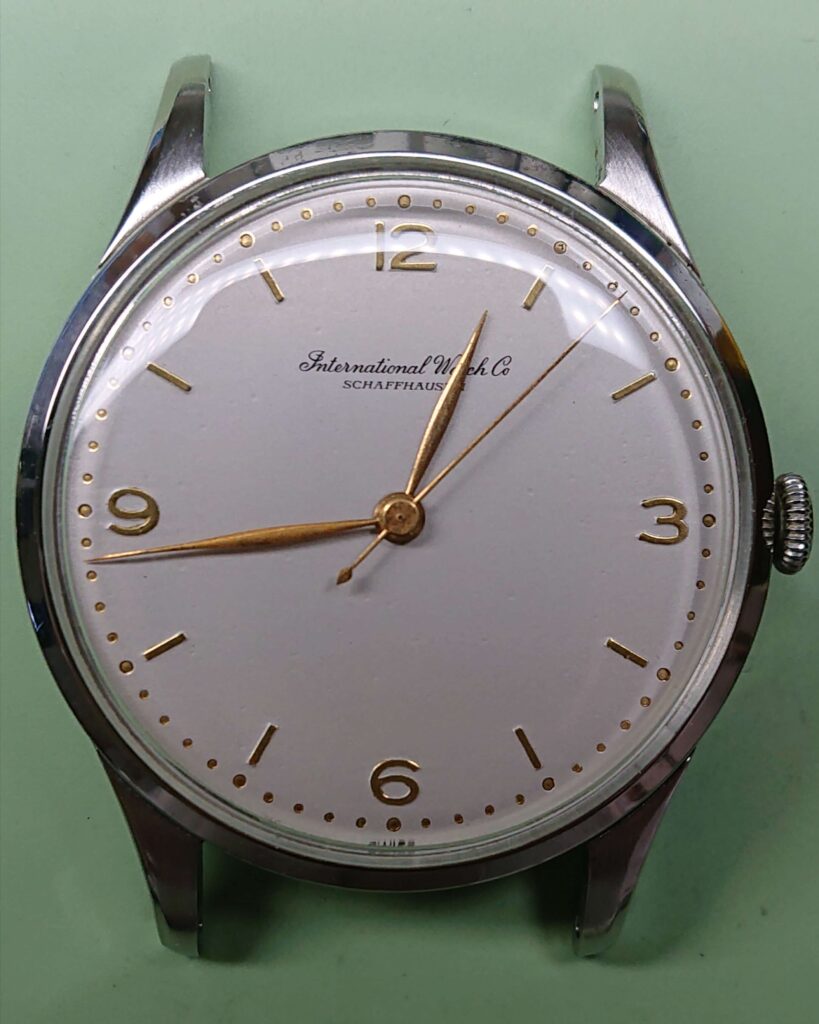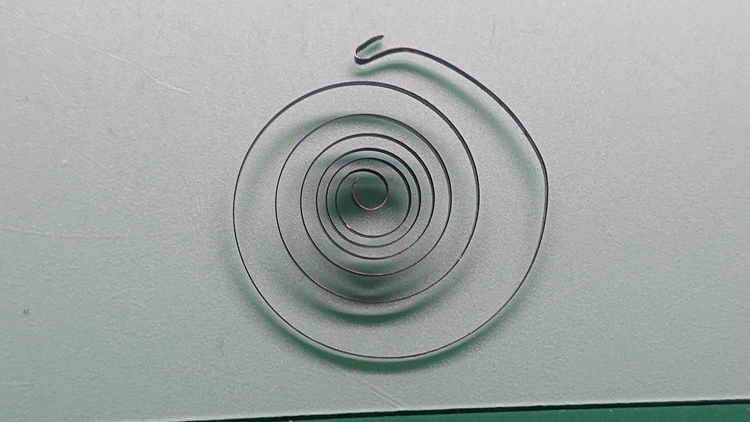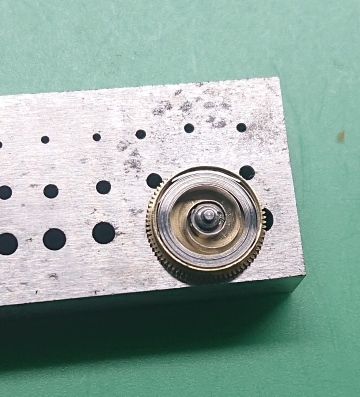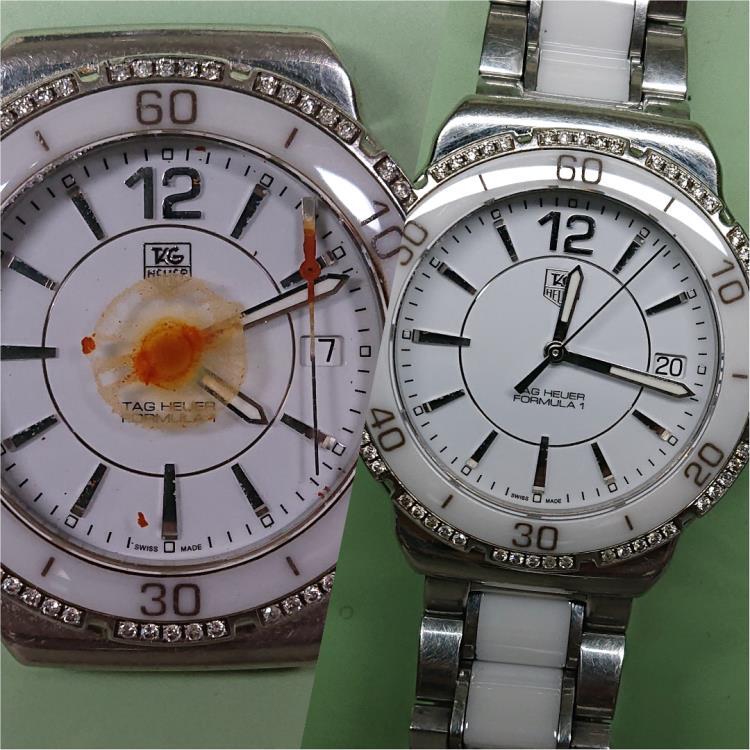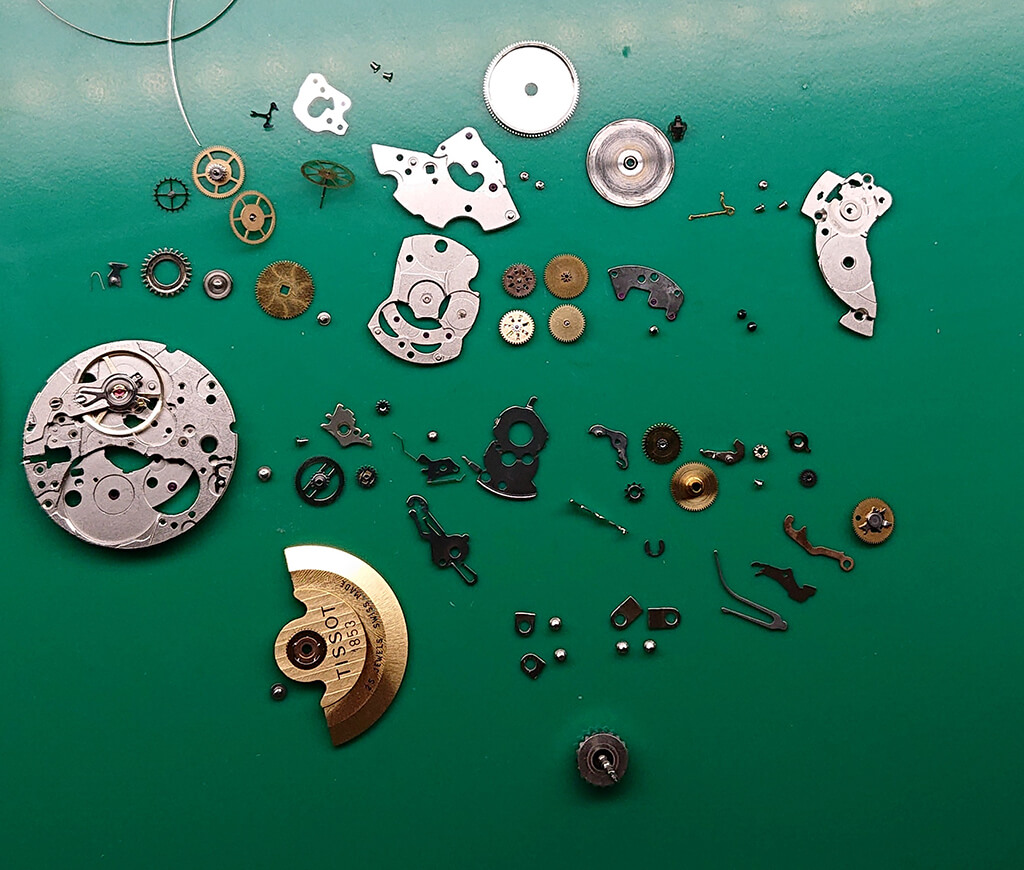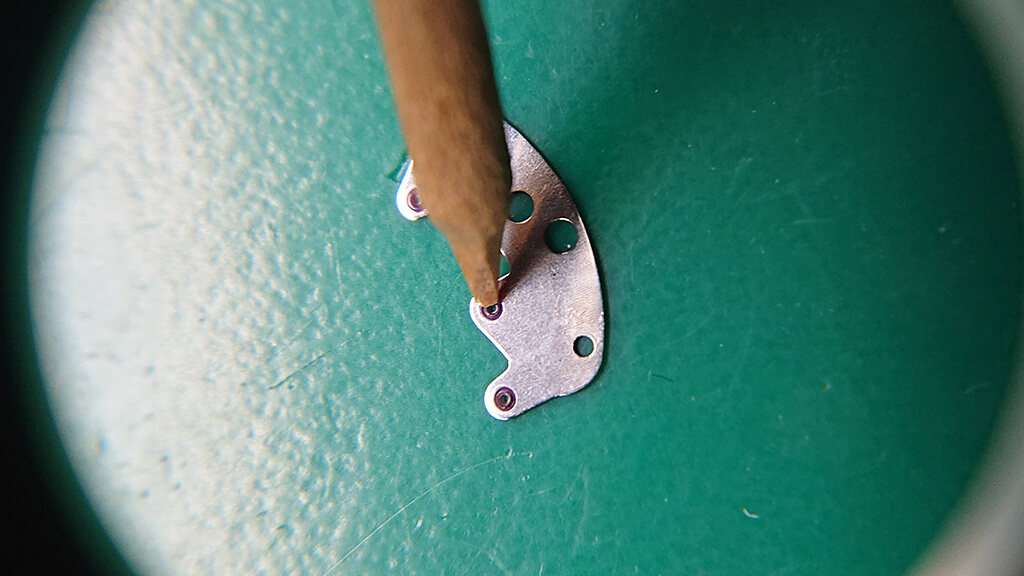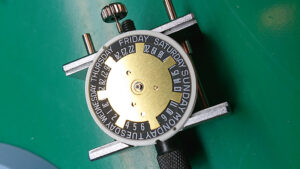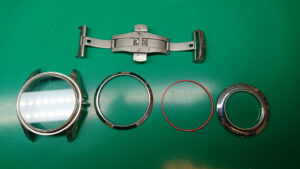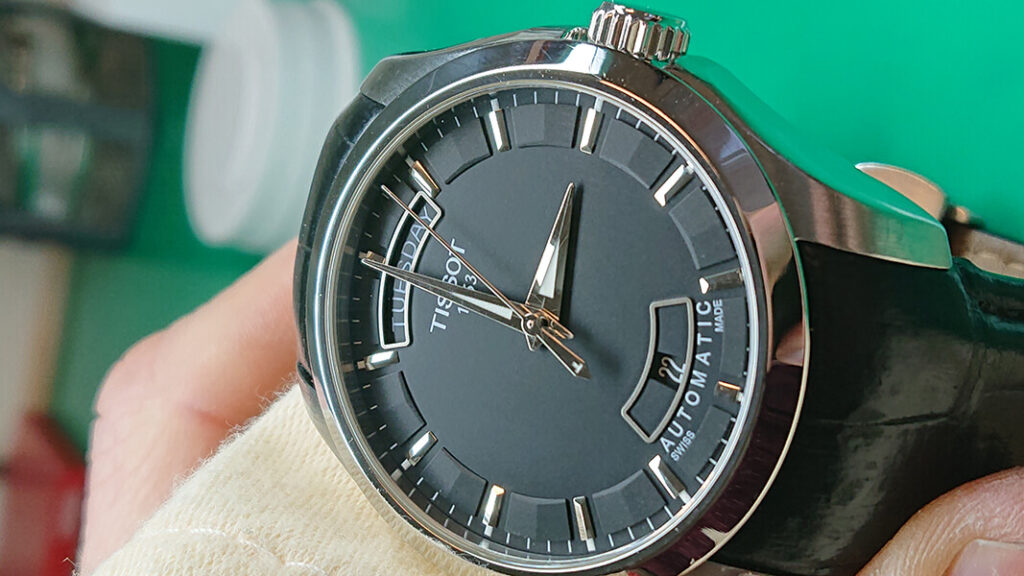An always popular model, the Omega Seamaster is a watch we see regularly in our workshop. This particular Omega Seamaster is a relatively recent model and it arrived from our client completely stopped. Inspection of the movement revealed dried up oils and greases, so it required a full service to restore it back to excellent working order.
As you can see in one of the images (lower right), the state of the movement was rather poor. The area we’ve focused on is to do with the automatic winding of the watch. This is an area of the movement which receives heavy wear, so leaving it for years and years without a clean and service can cause many parts to be completely worn out.
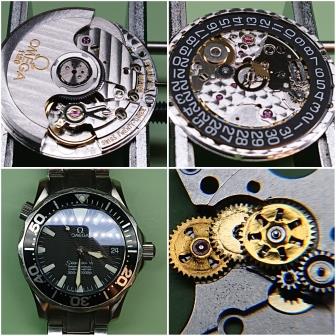
The movement powering this watch is an Omega calibre 1120 – an automatic mechanical watch movement of excellent quality. This is a modified version of a movement produced by ETA – one of the top watch movement manufacturers. The modifications are designed to improve performance, with 23 jewels and a three arm Glucydur balance amongst the modifications made to the base movement.
During a service we completely disassemble and pre-clean the movement, with each part inspected. The disassembled movement is then run through our specialist watch movement cleaning machine, while the case and bracelet are cleaned in a separate ultrasonic cleaner. After cleaning the movement is carefully reassembled and oiled. The dial and hands are then refitted, before the complete movement is fitted into the case.
Following reassembly, the watch is pressure tested to ensure it remains water resistant. The Omega Seamaster is rated to 300m water resistant – we are able to test to this depth using our Sigma watch pressure testing machine. All that’s left is to thoroughly test the watch before return to our client.
Do you have an Omega watch in need of repair? Get in contact with us to see how we can help. We are able to repair almost any Omega watch and we offer a comprehensive watch repair service. We cater to clients all around the UK thanks to our fully insured freepost watch repairs service. You can also bring watches in to our showrooms based in Lewes and Uckfield, Sussex. As Business Partners of the British Horological Institute and a Feefo Platinum Trusted Service Award accredited business, you can be confident when dealing with us.
Yours sincerely
David Clark DGA PJDip PJGemDip CertGA
Managing Director
W.E. Clark & Son Limited.

